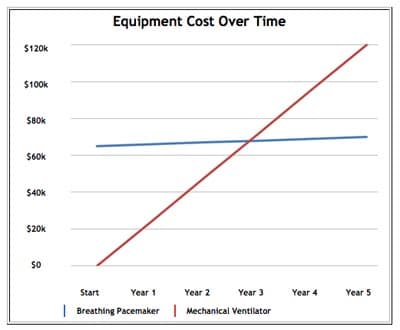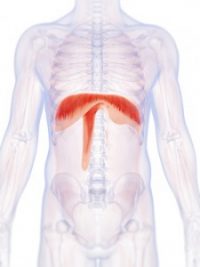CCHS Breathing Without Tracheotomy

CONGENITAL CENTRAL HYPOVENTILATION SYNDROME (CCHS) Central sleep apnea is a breathing disorder in which individuals experience pauses in breathing during sleep. When central sleep apnea is present from birth, it is called Congenital Central Hypoventilation Syndrome, or CCHS. CCHS patients typically have adequate ventilation while awake, and hypoventilation with shallow breathing while sleeping. However, patients […]
ALS Treatment and Assistance for Breathing

ABOUT ALS Amyotrophic lateral sclerosis (ALS), often known as Lou Gehrig’s Disease is a neurological disease which attacks the nerve cells responsible for controlling voluntary muscles. ALS is a rapidly progressive, fatal disease for which there is currently no known cure. ALS is diagnosed in an estimated 5,000 people each year in the United States […]
Improved Quality of Life for ALS Patients

Due to the nature of ALS as a degenerative disease, there is often a reduced quality of life as the disease progresses. However, there are steps that can be taken to improve the quality of life following diagnosis of the disease. One such step is utilization of the Avery Diaphragm Pacing System for breathing assistance […]
ALS Assistance for Breathing

ALS, also known as Lou Gehrig’s Disease, is a progressive neurodegenerative disease of the spinal cord and brain. The degeneration of muscle movement caused by the disease inhibits the brain’s ability to control muscle movement within the body. These muscles typically weaken over time, atrophy, and ultimately cease function. When muscles assisting in breathing weaken, […]
Diaphragm Pacing as a Long-Term Solution

The Avery Diaphragm Pacing System can be an enduring treatment for ventilator-dependent patients with quadriplegia, central sleep apnea including Congenital Central Hypoventilation Syndrome (CCHS), and diaphragm paralysis. A VALIDATED FEASIBLE TREATMENT When first developed, some doctors had theoretical concerns that continuous use of a diaphragm pacemaker may cause nerve damage. However, a physicians’ report in […]
The Cost Savings of Diaphragm Pacing

A significant reduction in costs for the long-term care of ventilator-dependent patients is one of the advantages of the Avery Diaphragm Pacing System over a mechanical ventilator. Although there is an initial cost outlay for the surgical implants of the Avery Diaphragm Pacing System, the system can pay for itself in less than a year. […]
Diaphragm Paralysis – The Problem and Treatment

The Diaphragm The thoracic diaphragm, or simply the diaphragm, is a large flat muscle positioned within and across the bottom of the rib cage. Shaped like an open parachute, it separates the lungs from the stomach area. The diaphragm performs an important function in respiration. When it contracts, air is drawn into the lungs. Then, […]
Phrenic Nerve Stimulation – What It Is and How It Works

WHAT’S THE PHRENIC NERVE? Your body has two phrenic nerves, a left and a right one. Each originates in the neck and passes down between the lung and heart to reach the diaphragm. These nerves play a pivotal part in breathing – passing motor information to the diaphragm while receiving sensory information. WHAT IS PHRENIC […]
Ventilators for Quadriplegia – There Is a Better Option

Quadriplegia is the inability to move or feel both arms and both legs because of an injury or illness. The levels of quadriplegia (C1-C8) directly correlate to a patient’s abilities and needs. (See also: Quadriplegia) METHODS OF VENTILATION There are alternatives to ventilators for quadriplegics: Positive Pressure Ventilation (PPV) Any of numerous types of mechanical ventilation […]
Respiratory Assistance for ALS

WHAT IS ALS? Amyotrophic lateral sclerosis (ALS), often referred to as “Lou Gehrig’s Disease,” is a progressive neurodegenerative disease that affects nerve cells in the brain and spinal cord. It is characterized by progressive muscle weakness that results in paralysis. For more information, visit the ALS Association website. HOW ALS AFFECTS BREATHING With ALS, the nerves’ […]